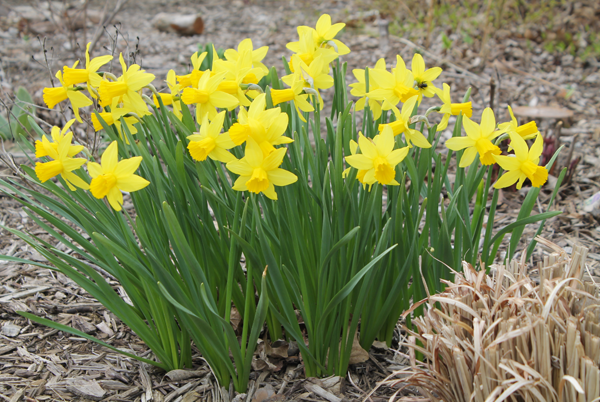
The winter is over and the rebirth of plants has begun. I think it is in all of us to get our hands dirty this time of year. When you are buying plants, understand what you are buying. Are the vegetables hybrid? You can’t save their seeds but they have been altered for the best production in the area. Buying a shrub? How big will it get? What type of growing conditions does it need? Is the plant a native or will it spread and become a nuisance?
Stick to Planting Native Species
If you’ve been reading this column for awhile, you have read about my dislike for kudzu. It’s not native, and it just takes over. Well, I have an experiment in progress. Nature has decided that I needed to redirect my experience with kudzu. My disdainful expression as I drive by it has been replaced by a shovel, a pick, dirty hands and a kill-it attitude for the vines that dared to invade my property. So, I have pulled and dug and I know that the sucker still lives. Somewhere in that hole is a sliver of a tuber that will regenerate. I am adding epsom salts to that hole in hopes of eliminating regrowth. Stay tuned for more on that saga.
Another invasive is English ivy. It is climbing up and strangling every tree in the little woodlands behind my property and it dares think that I invited it onto mine. Several months ago, in the cold of the winter, I took my clippers out to the trees on the perimeter. I clipped the English ivy vines off the bark from the ground to 6 feet up. Now, that left the vine still in the trees and winding through the branches. It has taken until the end of March for me to detect nutrient and water deficiency in those remaining vines but they are dying. I had also ripped the vines out of the ground around the base of the trees and will follow up this month with a vine killer, spraying the foliage and roots still left. I want the tree to live and the vines to be gone. They don’t belong there. I will spray on the other side of the property and determine if the trees get freed as quickly from the spray as they do from the slow nutrient-deficient death. I will, if I have to, go and clip vines off the bark there, too, but I am trying to minimize physical labor.
Plants to Support Wildlife
As you select your plants, assess if they are ornamental only and do not support our native wildlife. You do want to plant annual flowers, herbaceous plants, low and tall shrubs, vines and small and tall trees. This wide variety of plant species encourages cover for a variety of animals while it is a food source for some. The same animal can have different food needs throughout the year. As an example, birds feed primarily on seeds, but will switch to insects when raising their young. Consider planting a combination of plants that will provide nuts, seeds, fruits, berries and flower nectar. Keep their spacing needs in mind so they can mature in the selected spot.

In planning and planting your outdoor refuge, mimic nature. Intermix areas with native grass, shrubs and trees. As you plan your yard, don’t forget to plan places for yourself. Provide a place with a seat among the trees. Have the bird feeders within view of your windows. Draw up your plan on graph paper; decide if you or a landscaper will be doing the work. Realize that vegetation growth does take time. Every stage of your yard transforms as it grows and throughout each season. With proper planning, you can accept it for what it is.
Daffodils Are Not Buttercups
Buttercups are not daffodils. Calling one by the other’s name causes confusion.
The “cup”-shaped center of the daffodil probably helped start this confusion long ago, but daffodils are of the Narcissus species, while the buttercup is a five-petaled yellow flower of the Ranunculus family. It’s attractive to look at, but it’s more weed than flower, growing naturally and spreading aggressively. If you call a daffodil a jonquil, you’re half-right (same species, at least). If you call it a buttercup, sorry—that’s just incorrect.
Trim, Don’t Top
Don’t go cutting off branches and making tree limbs into stumps. For information on how to trim a tree or shape it to what you think it should be, visit the extension office. Or if you’ve got internet access, search for it online: trimming a tree (not “tree topping”). Find out the correct way to trim trees. Homeowners and property managers, don’t hire “landscapers” who offer tree topping. That is a sure way to see that they don’t know what they are doing. Trim, don’t top.













